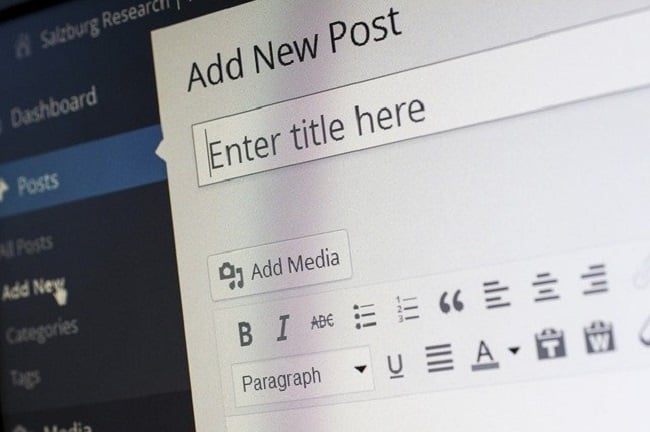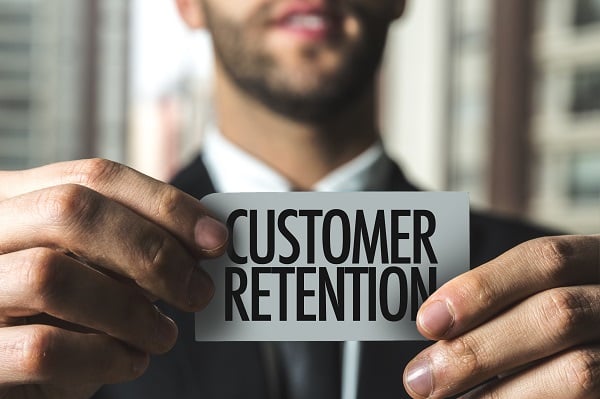“Loyal customers, they don’t just come back, they don’t simply recommend you, they insist that their friends do business with you.” – Chip Bell
Loyal customers form the backbone of long-term business success. This is the cohort that sees your company through good times and bad. They act like brand ambassadors, spreading the word about your business and attracting even more custom your way.
These are just some of the reasons why, according to research by the Harvard Business School, just a 5% increase in customer retention can lead to an increase in profits of between 25 and 95%. Quite simply, loyal customers create a virtuous circle of business continuity, a receptive market for cross-selling and up-selling, with all the business growth opportunities this brings.
- Looking for marketing inspiration? Take a look at our free resources
Furthermore, acquiring a new customer can cost five times more than retaining an existing customer. If you’ve worked that hard to win your customers in the first place, why not make the effort to develop smart strategies and tactics that will keep them coming back for more?
What we're talking about here is customer retention - keeping your most profitable customers. These are the customers who bring value to your business over a sustained period of time, allowing your business to grow.
Putting a process in place
Hope is not a strategy, and just relying on the quality of your product or service isn't enough. You need to have a process and plan in place to ensure your customers receive the best experience possible. This goes beyond purely transactional interactions. You need to focus on the relationship and maximising the value they receive from your product or service, at every touchpoint.

Start by mapping out the contact points and deliverables you currently have in place for all customer groups. This should include everything from the very first contact and onwards throughout the entire customer lifecycle. Look hard enough and you’re bound to find weak points in the interactions you have. Are your initial thank-you emails missing valuable information? Are your newsletters getting low open rates because they are, quite frankly, boring? Are your response times poor? Are your customers trying to talk to you on social media though you haven’t logged onto Twitter since 2018?
"You need some way of systematically gathering customer feedback."
If you’re not sure how you’re doing don’t be afraid to ask for feedback. Send out an email or letter directly after a purchase or at appropriate intervals throughout the year. You need some way of systematically gathering customer feedback. Perhaps work out your Net Promoter Score - the universally recognised score for customer satisfaction, which is created by your customers answering one simple question: would you recommend us?
Getting these insights can help improve your service, uncover opportunities to increase sales and - crucially - let your customers know that they are valued and that you care.
- Need help putting your roadmap together? Take a look at our blog on creating a customer retention plan,
Ensure your CRM is being used
If you don't have a functional CRM in place, then get one. A CRM is the single source of truth when it comes to your customer's relationship with your business. It will include all of the vital information regarding a customer, so every interaction they have with your business is seamless and you can market to them only relevant messages.
Once you have one in place, you need to work hard to ensure it's actually being used properly. Keeping a CRM updated requires discipline, training and leadership. Unless everybody is on board and knows why it's important, it won't be effective.
Understanding your customers
The more you know about your customer’s buying habits, the better your customer retention plan will be. You’ve already taken a look at your marketing data and spotted the points where you lose customers. Make sure you’ve really thought about what you can do to combat these. How can you track low-spending customers more effectively and what can you offer them to increase revenue and foster loyalty?
Ideas for improving customer retention
Now we have our customer retention plan, and a well-managed CRM, we can start looking at ideas to improve customer retention and make sure those hard-won customers stick around for the long-term.
-
Enhance the service you provide
Your audience and market are constantly changing so it’s important to make sure your products and services are still meeting your customer’s needs. Take a long, objective look at your competitors and what they’re up to. What are they physically offering and how well are they communicating with their customers? Perhaps you could learn a thing or two from their approach to social media or their website. Are they better at innovation and product development? It might be time to review what you’re providing or how you’re providing it.
It can be tricky to see your own businesses objectively and identify areas for innovation and improvement. Also, if you’ve been operating in a marketplace for a long time you may have become blind to new opportunities, or developments that you need to adapt to. It’s perfectly understandable.
Many businesses find that working with an external team of marketing experts can help refresh their view of the business and help them discover new ideas for development or better ways to communicate with their audience. If you would like to find out how our marketing services could help support your business, contact us today.
-
Have multiple contacts within each business
Having a number of different contacts within each of your customers means you are not reliant on your relationship with one person. You will develop a good overview of the organisation, which will improve your understanding of how you fit into the organisation. Plus, you may well be able to ‘join the dots’ across departments better than anyone inside the company.
Keep adding this extra value and you’ll ingrain your product or service into their business and they’ll be more likely to stay loyal. So, why not invite other colleagues to your catch-ups and suggest that your client does the same? You might learn something about how your product could be used by different parts of the business.
-
Create relevant content that is genuinely useful
One of the best ways to retain customers is to be genuinely useful to them. For example, by providing them with content that will make their lives easier, helping them solve a particular problem or simply entertaining them.

If you don’t know where to start, take a look at what’s getting engagement on social media or in online or offline publications in your sector. Understanding your customer’s pain points and the things they are taking the time out of their day to read is really valuable,
Make a list of these content ideas and add in any other news and updates you think might be relevant to your readership and form a plan for a newsletter or bulletin. Plan the times of year the types of content will be most useful.
-
Track your progress
Your customer churn rate is one of the most important metrics to keep an eye on. This refers to the rate at which customers stop doing business with you. If your annual churn rate is more than around 7%, it’s time to evaluate the happiness of your customers. Taking a deeper look into any issues can help identify what’s gone wrong and help you seek out ways to remedy these losses.
Customer churn rate is not the same as your customer retention rate, which is the ratio of customers who return to business with your company. Your annual churn rate is a simple equation: If you have 100 customers at the beginning of the year and 93 of them remain at the end you've lost 7, giving a churn rate of 7% or (100-93)/100.
"The important thing is that you view it accurately and objectively - and that you learn."
You will need to devote the time and resources to measuring your efforts to improve customer churn, and act on any insights. A CRM houses all your valuable data in one place, or it might be spread over a number of databases. The important thing is that you view it accurately and objectively - and that you learn.
To make sure you’re not missing out on valuable insights, take a look at our list of the 14 Customer Retention KPIs you Need to Measure.
-
Consider customer lifetime value
Your customer lifetime values (CLTV) is one of the most important metrics to measure at any business.. CLTV indicates the total revenue a business can reasonably expect from a single customer account. It considers a customer's revenue value, and compares that number to the company's predicted customer lifespan. By measuring CLTV in relation to cost of customer acquisition, you can measure how long it takes to recoup the investment required to earn a new customer, including the cost of sales and marketing.

This will particularly be the case if you are able to segment your customers into demographics or personas that could be approached for specific marketing campaigns. For more information about the importance of assessing the value and profitability of your customers, take a look at this recent blog: Do you really know who your best and most valuable customers are?
- Get some extra ideas with our blog on six ways to improve customer retention.
Special considerations for B2C customer retention
As a more transactional model, B2C brands need to focus on offering the best sales process possible and providing an outstanding customer experience. Promoting the brand well is key to your success - doing all you can to make sure that customers feel connected to your company and that you share the same values.
Make sure that every touchpoint in the customer journey is smooth, efficient and professional. That includes payment processes, access to relevant FAQs and showing that you work with reputable shipping providers.
Special considerations for B2B customer retention
For B2B brands, increasing customer retention is generally more about building long-term relationships. Making sure that your customers trust you to deliver and to do so with professionalism and integrity.
Never make promises you can’t keep or push them to buy more products or services when it’s clear they’re still easing into the new relationship. In short, don’t stalk or hassle.
Make the effort to keep in touch regularly and add value wherever you can. This might be offering special discounts or invitations to exclusive events. It might be attending their events and showing support or supplying them with educational materials to help them get more out of your products. Whatever tactics you use, make sure you act in the interests of the customers and their business, not simply what is going to increase your bottom line.
- Read more about our ideas for boosting customer retention for B2C and B2B customers here.
As with all aspects of business, we are all constantly learning and developing new and better ways of working. With the help of a well-managed CRM, a robust plan and a unified team that is working hard to retain your customers you can make sure your sales, marketing and service efforts are being focused on the right things and that your customers are getting exactly what they need from you, now and into the future.
For even more ideas about how to create, or improve, your customer retention processes, take a look at How to Implement a Winning Customer Retention Process.
And if you’re still feeling a bit overwhelmed and could do with a hand getting started, please contact us today. We’d be happy to help. And don’t forget to sign up to our newsletter for all the latest marketing guidance and industry comment.
Images via AdobeStock, Unsplash, Pixabay and Pixabay





